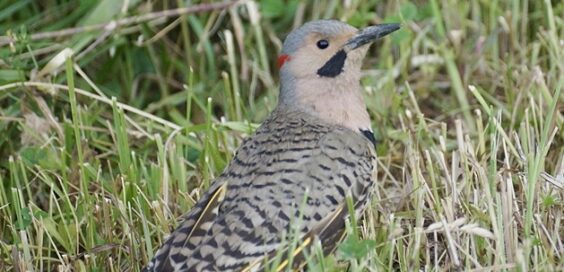
Creature Feature – Northern Flicker Facts
Posted by Dustin Horton // September 12, 2023 // Articles, Creature Feature
Northern Flickers aren’t your typical woodpecker, as they spend a good deal of time on the ground. Rather than pounding away at tree bark, their long, slightly curved beaks are designed to unearth ants, beetles, and other insects and their larvae.
Northern Flickers have brown backs with pale undersides and are boldly patterned with black crescents and spots. Both sexes have a red patch on their nape and a black collar, but only the male sports the black “mustache” marking. Another reliable field mark is a white rump patch conspicuous in flight.
Here in the northeast, we have Yellow-shafted Northern Flickers (the feather shafts under their wings and tails are bright yellow). Out west, the birds are mostly the Red-shafted variety. Nevertheless, they are both the same species – Northern Flicker.
Flickers are cavity nesters, often choosing to excavate their nest holes in dead or dying trees. Keeping such “snags” on your property instead of cutting them down is very beneficial to this species, which has suffered due to habitat loss and degradation.
Flickers are noisy! Listen for their loud, repetitive song, “wick-wick-wick-wick-wick…” as well as other calls including a sharp “klee-yer!” and a squeaky “wicka-wicka-wicka-wicka…” Also, look for this unique woodpecker along wooded or brushy backyard edges as they hop along the ground foraging for bugs. While most Northern Flickers migrate south for the winter, some remain behind, feeding on various berries and seeds.
Article & photo by Margie Manthey












